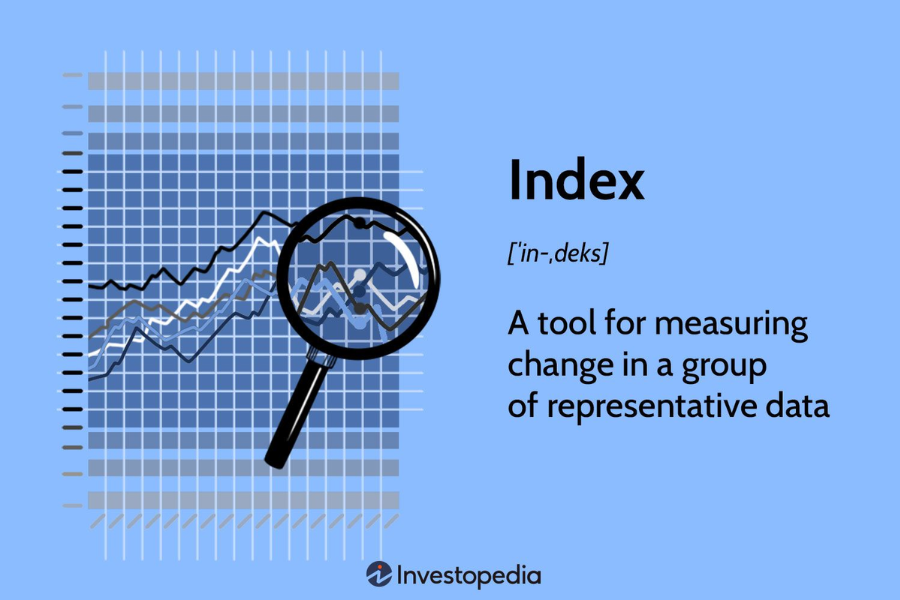Introduction
Indexing is a foundational concept in both economics and investing, providing a streamlined way to track, measure, and compare performance metrics across various sectors. In its broadest sense, indexing refers to the use of specific benchmarks or indicators to assess changes and trends over time. In finance, it often implies compiling economic data into a single metric, such as an index, which then serves as a reference point for understanding broader market behavior. Indexing has become especially significant in the world of investing, where it represents an increasingly popular strategy for investors aiming to gain market exposure without the high costs and risks typically associated with actively managed funds.
In this article, we’ll delve into what indexing means, its applications in both economics and investing, and the advantages it offers to individual investors and businesses. Whether you’re new to the world of finance or simply looking to expand your knowledge, understanding indexing can open doors to smarter investment strategies and a clearer view of economic trends.
What Is Indexing?
In its simplest form, indexing is the practice of compiling data into a single metric or comparing different data sets against a reference indicator. In economics, indexing involves using a statistical measure to track changes over time in various economic variables such as inflation, unemployment, or productivity.
In finance, indexing often refers to the strategy of passively investing in a portfolio that replicates a specific market index like the S&P 500. This approach allows investors to match market returns without actively managing individual stocks.
Key Takeaways
- Indexing involves using a benchmark indicator to track or compare economic and financial data.
- It serves as a statistical measure for tracking economic indicators like GDP, inflation, and market returns.
- In investing, index funds aim to replicate the performance of a market index, offering diversification and lower costs.
- Indexing can be an effective tool for passive investing, allowing investors to gain broad market exposure.
Understanding Indexing in Economics
In economics, indexing is used to measure and monitor economic trends. For instance, economists and policymakers rely on indexes to understand changes in the cost of living, productivity, and overall economic growth. Commonly used economic indexes include:
- Consumer Price Index (CPI) – Measures changes in the price level of consumer goods and services purchased by households.
- Producer Price Index (PPI) – Tracks changes in the prices producers receive for their goods and services.
- Gross Domestic Product (GDP) Index – Reflects the overall economic activity of a country.
- Purchasing Managers’ Index (PMI) – Assesses the health of the manufacturing sector.
These indexes play a crucial role in policymaking, as they help governments adjust interest rates, tax policies, and social welfare programs based on economic trends.
Indexing in Financial Markets
In financial markets, indexing is used to measure the performance of a collection of assets. This can be done through the construction of stock market indexes, which serve as benchmarks for investors and fund managers.
Key Examples of Market Indexes:
- S&P 500: Comprises 500 of the largest U.S. companies and is a popular indicator of market health.
- Dow Jones Industrial Average (DJIA): Tracks 30 significant stocks and provides insight into the broader U.S. economy.
- Russell 2000 Index: Represents small-cap stocks and reflects the performance of smaller, lesser-known companies.
These indexes allow investors to track how specific segments of the stock market are performing, enabling them to make informed investment decisions.
How Indexes Are Constructed
Indexes are typically constructed using weighting methods:
- Price-weighted index (e.g., DJIA): Higher-priced stocks have more influence on the index’s performance.
- Market capitalization-weighted index (e.g., S&P 500): Larger companies by market cap have a more significant impact on the index.
The Role of Indexing in Passive Investing
In investing, indexing refers to a passive strategy where investors attempt to replicate the returns of a specific market index rather than selecting individual stocks. This strategy is appealing for several reasons:
- Lower Costs: Index funds generally have lower management fees and expense ratios than actively managed funds.
- Broad Diversification: Index funds provide exposure to a wide range of securities, reducing the risk associated with investing in individual stocks.
- Consistent Performance: Historically, index funds tend to outperform actively managed funds over the long term due to lower costs and broader diversification.
Benefits of Index Investing
- Reduced Costs: Since there is minimal trading involved, index funds are cost-efficient.
- Tax Efficiency: Index funds typically generate fewer taxable events, making them more tax-efficient than actively managed funds.
- Ease of Management: Investors do not need to worry about constantly monitoring the market or making frequent trades.
Types of Index Funds
Index funds come in various forms, each designed to track a specific segment of the market:
- Broad Market Index Funds: These funds track indexes like the S&P 500, providing exposure to the entire market.
- Sector-Specific Index Funds: These target specific industries, such as technology, healthcare, or energy.
- Bond Index Funds: Track indexes related to fixed-income securities, offering a safer investment option.
- International Index Funds: Provide exposure to markets outside the investor’s home country, such as the MSCI Emerging Markets Index.
Indexing and Tracker Funds
Tracker funds aim to replicate the performance of a customized index by selecting a subset of securities based on specific criteria. These funds use screening filters such as fundamentals, growth potential, or dividend yield to focus on the best stocks within a broader category. Tracker funds provide investors with the flexibility to focus on niche markets while maintaining the benefits of indexing.
Examples of Customized Indexing
- Dividend-Focused Funds: Select stocks with high dividend yields.
- Growth Index Funds: Focus on companies with strong growth potential.
- Socially Responsible Investing (SRI) Funds: Include companies that meet certain environmental, social, or governance criteria.
Is Indexing a Smart Way to Invest?
For most individual investors, indexing is a highly effective strategy. It offers the benefits of diversification, lower fees, and passive management, allowing investors to achieve market-level returns without the complexities of active stock picking.
Key Advantages of Index Investing:
- Long-Term Stability: By mimicking the broader market, indexing reduces volatility.
- Lower Fees: Passive funds have minimal management costs, leading to higher net returns.
- Reduced Stress: Investors don’t need to spend time analyzing stocks or predicting market movements.
Conclusion
Indexing serves multiple purposes in both economics and investing. Whether used to track inflation rates or to create low-cost investment portfolios, indexing plays a vital role in simplifying complex data. For investors, index funds provide a cost-effective and efficient way to participate in the stock market while minimizing risks.
By understanding how indexing works, investors can leverage this strategy to optimize their financial goals. Whether you’re a beginner or an experienced investor, indexing offers a practical way to grow your wealth steadily over the long term.
Ready to Start Investing in Index Funds?
If you’re interested in using indexing as a strategy, consider opening an account with a brokerage firm that offers index funds and ETFs. With the right approach, indexing can be a powerful tool in your investment arsenal.
This article aims to provide an in-depth understanding https://glamourcrunch.com/ of what indexing is and how it can benefit investors. Whether you’re looking to diversify your portfolio or simply want to keep up with economic trends, indexing is an essential tool to master.











